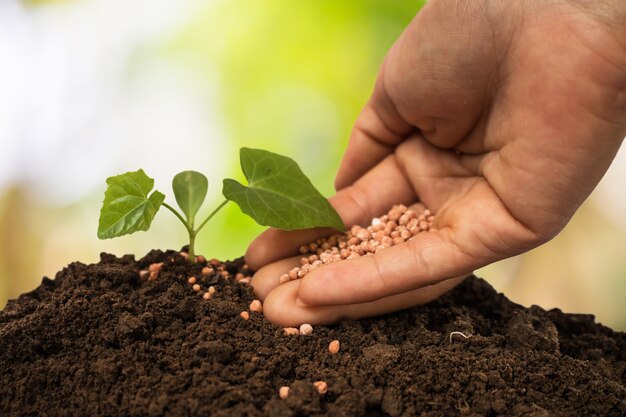The global movement toward sustainable farming practices is becoming more prominent, and South African farmers are no exception. One key aspect of eco-friendly agriculture is the use of biofertilizers. These organic substances can significantly boost crop yields and improve soil health without the harmful effects associated with chemical fertilizers. Here’s a guide to understanding and using biofertilizers effectively on your farm.
1. What Are Biofertilizers?
Biofertilizers are natural fertilizers that contain living microorganisms. When applied to seeds, soil, or plant surfaces, these microorganisms colonize the plant roots and enhance nutrient uptake. They can fix atmospheric nitrogen, solubilize phosphorus, and decompose organic matter, enriching the soil ecosystem.
2. Benefits of Using Biofertilizers
- Improved Soil Health: Biofertilizers help maintain the soil’s natural nutrient balance and increase its fertility.
- Eco-Friendly: They reduce environmental pollution and carbon footprint compared to synthetic fertilizers.
- Cost-Effective: Once established, they lower the overall cost of fertilization due to reduced chemical input needs.
- Enhanced Plant Growth: The symbiotic relationship between plants and biofertilizers promotes healthier and more robust plant growth.
3. Types of Biofertilizers and Their Uses
- Nitrogen-Fixing Biofertilizers: These include Rhizobium, Azospirillum, and Azotobacter, which convert atmospheric nitrogen into a form that plants can absorb. They are particularly useful for legumes like beans and peas.
- Phosphate-Solubilizing Biofertilizers: Such as Bacillus megaterium, these help make phosphate available to plants, boosting root and shoot growth.
- Potassium-Solubilizing Biofertilizers: These assist in releasing potassium from insoluble minerals, which is essential for the overall development of crops.
- Compost Biofertilizers: These consist of beneficial bacteria and fungi that help break down organic matter into humus, enriching the soil.
4. Steps to Applying Biofertilizers on Your Farm
Seed Treatment:
- Mix the biofertilizer with water or an adhesive like gum arabic to create a paste.
- Coat the seeds evenly with this paste and let them dry in the shade before planting.
- This method is effective for crops such as maize, beans, and wheat.
Soil Application:
- Mix biofertilizer into compost or farmyard manure to create a nutrient-rich mixture.
- Apply this mixture to the soil either by broadcasting or adding it into the furrows before sowing.
Seedling Dip:
- For crops like vegetables and fruit trees, dip the roots of the seedlings in a biofertilizer solution for 20–30 minutes before transplanting.
Foliar Spray:
- Biofertilizers can be diluted in water and sprayed directly onto the leaves for crops like leafy greens and fruits. This helps deliver nutrients more directly and can complement soil applications.
5. Best Practices for Effective Use
- Choose the Right Biofertilizer: Select based on the type of crops you grow and the specific nutrient deficiencies of your soil.
- Maintain Moisture: Ensure the soil remains adequately moist to allow the microorganisms to thrive and be effective.
- Avoid Chemical Fertilizers: If possible, minimize the use of chemical fertilizers, as they can inhibit the activity of the microorganisms in biofertilizers.
- Store Properly: Biofertilizers should be stored in a cool, dry place away from direct sunlight to preserve their viability.
6. Challenges and Solutions
- Initial Adaptation: Some farmers may find it challenging to transition to biofertilizers due to unfamiliarity. Engage in training workshops or work with agricultural extension services to understand application techniques.
- Time for Results: Biofertilizers may take longer to show visible results compared to synthetic options. Patience and regular application can help.
- Quality Assurance: Purchase biofertilizers from reputable suppliers to ensure you get a product with viable microorganisms.
7. Success Stories from South African Farmers
Many farmers in South Africa have already made the switch to biofertilizers with great success. From improved crop yields to lower farming costs, the benefits have proven worth the investment. For instance, vegetable farmers in the Western Cape have reported richer harvests and longer-lasting soil fertility after incorporating biofertilizers into their farming routines.
Incorporating biofertilizers into your farming practice can lead to sustainable growth and productivity while protecting the environment. By following the right application techniques and maintaining consistent use, South African farmers can enhance their crop yields and soil health, paving the way for a more eco-friendly and profitable future.
Embrace the change, and witness the long-term benefits of using biofertilizers on your farm.
Join 'Farmers Mag' WhatsApp Channel
Get the latest Farming news and tips delivered straight to your WhatsApp
CLICK HERE TO JOIN






